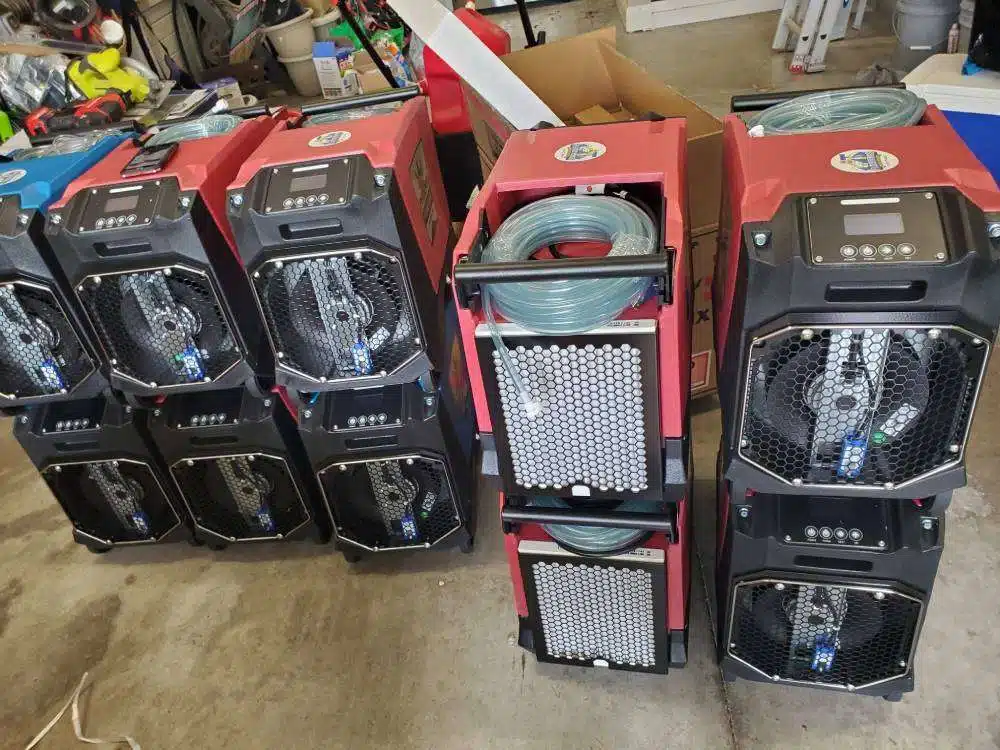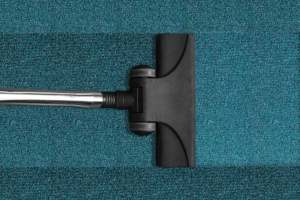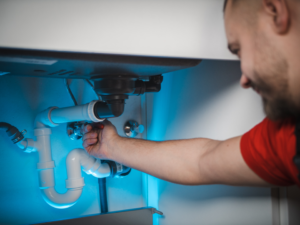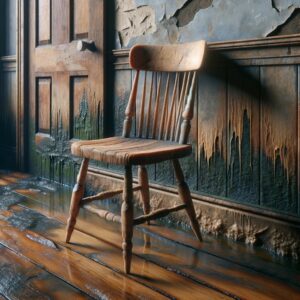Price is one of the primary reasons many homeowners avoid professional help after water and flood damage. According to National Flood Services, the average water damage remediation cost begins at $3.75 – $7.00 per square foot and even hits $30 per square foot in some areas.
Before you grab a mop and bucket, know that unless you are a professional, it’s pretty hard to remove all residues of moisture from your home. Poor cleaning work can result in significant problems like mold growth and bacteria spread. This is why getting in touch with a certified professional like TN Flood Kings is essential: we have the skills and equipment to handle any water damage restoration job, big or small.
Plus, some water damage is hidden, and failing to catch and remediate it on time can mean even more expensive repairs down the line. Last but not least, water damage poses a fire, health, and electrical hazard, so it’s cheaper to contact a water damage restoration professional than to deal with the risks.
Does Insurance Cover Water Damage?
When you find your home flooded, your first concern after safety will be the cost. Thankfully, your homeowners’ insurance will cover certain types of water damage. Specifically, it will handle problems resulting from issues outside your control, such as a well-maintained appliance that suddenly fails.
However, insurance will only cover floods if you have specific flood insurance due to the high cost associated with these damages. It will also not cover damage caused by neglect or improper usage.
TN Flood Kings also communicates with your insurance on your behalf and helps with insurance claim management.
When it comes to water damage restoration cost, there are two crucial factors companies consider. The first is the water category (how clean it is), and the second is the severity of the damage. Let us explain it in more detail below.
Water Categories
There are three categories of water damage:
- Category 1 or clean water
- Category 2 or gray water
- Category 3 or black water
When estimating water restoration costs, we categorize the damage according to water categories. This helps us prepare for any risks associated with the water.
Clean water
Clean water doesn’t contain any harmful contaminants, but it still should be assessed by a professional, as you need the right tools to identify the extent of the water damage and correctly mitigate any dangers from mold growth. TN Flood Kings uses state-of-the-art technology, such as professional moisture meters, to fully map the damage and ascertain what may need to be removed.
Gray water
Gray water generally comes from leaking appliances, such as a dishwasher. While it’s not as dangerous as Category 3 water, gray water can cause extensive damage and is more expensive to mitigate. You will need to take certain precautions to prevent health risks. Contact a team of IICRC-certified professionals like TN Flood Kings, who can lessen the risks associated with this type of damage.
Black water
Black water is Category 3 water: it often results from sewer line backups or natural disasters such as rivers overflowing. As it may contain raw sewage or other dangerous contaminants, it must be handled by professionals. It’s incredibly dangerous to interact with and requires specialized training to remediate. Fortunately, Flood Kings is highly experienced with this problem, and we’re ready to assist.
How Much Does It Cost to Repair Water Damage by Type?
The type of water that enters the home affects the water restoration cost significantly. However, only a licensed professional can accurately assess water damage. So, how much does it usually cost to repair water damage by type?
Clean Water
Water coming in through a pipe or rain causes clean water damage. The average cost of drying clean water is $3.75 per square foot, but this varies depending on the exterior and material. If parts of your home or belongings become wet, you’ll also have to pay for repair and replacement.
Gray Water
Water coming from a device like a dishwasher causes gray water damage, which could have soap or other harmful chemicals that must be addressed by the cleanup and restoration process. On average, gray water remediation costs $4.50 per square foot.
Repairs are an additional expense. Gray water can contain toxic materials and come from a variety of sources, including kitchen appliances and washing machines.
Black Water
A polluted source, such as a sewer backup or toilet water containing chemical or fecal matter, causes black water damage. Water entering sewer lines may contain harmful bacteria. It is hazardous to one’s health. Cleaning up black water costs about $7 per square foot on average.
You will also need to plan for item repair and replacement. If black water contaminates items such as furniture, mattresses, mats, or clothing, they must be replaced. Replacing items is usually less expensive than attempting to restore them.
Water damage restoration cost for black water is typically between $1,210 and $5,170, based on the source of the issue and the extent of the damage.
Water Damage Severity
Water damage severity can be divided into four categories according to the amount of water that enters the property and the porousness of the affected materials.
- Class 1: Small amount of water, light absorption, light evaporation
- Class 2: Mid-range water absorption and evaporation
- Class 3: High water absorption and evaporation
- Class 4: Deep pockets of saturation
Class 1: Small amount of water, light absorption, light evaporation
If porous materials such as carpets, fiber fill, walls, and ceilings make less than 5% of the affected area, and the rest are materials that can be quickly dried, we have a Class 1 water damage case. This is the best time to catch the damage and contact a pro as your expenses will be lower.
Class 2: Mid-range water absorption and evaporation
A Class 2 water damage case is one where the water affected up to 40% of porous materials, while the low evaporation materials (concrete, masonry, wood) aren’t that affected. It’s highly important to seek professional help to keep the damage from spreading.
Class 3: High water absorption and evaporation
Class 3 water damage refers to situations where over 40% of porous materials are affected. However, the low evaporation materials are not seriously affected. In Class 3 cases, your water damage restoration project will take longer and cost more.
Level 4: Deep, unmoving water intrusion.
This is the most severe case of water damage, typical during floods. In this case, the remediation process will require special tools and machinery such as industrial-grade fans and dehumidifiers, water extraction tools, and special cleaning agents. And even then, the results are not guaranteed.
How Much Does Water Damage Restoration Cost Per Square Foot?
Most water damage restoration businesses will charge between $3.75 and $7.00 per square foot. If your house is 1,500 square feet in size, you would have to pay between $5,625 to $10,500 to restore it entirely. However, because water damage usually only impacts one or two rooms, you could end up paying around $3,000.
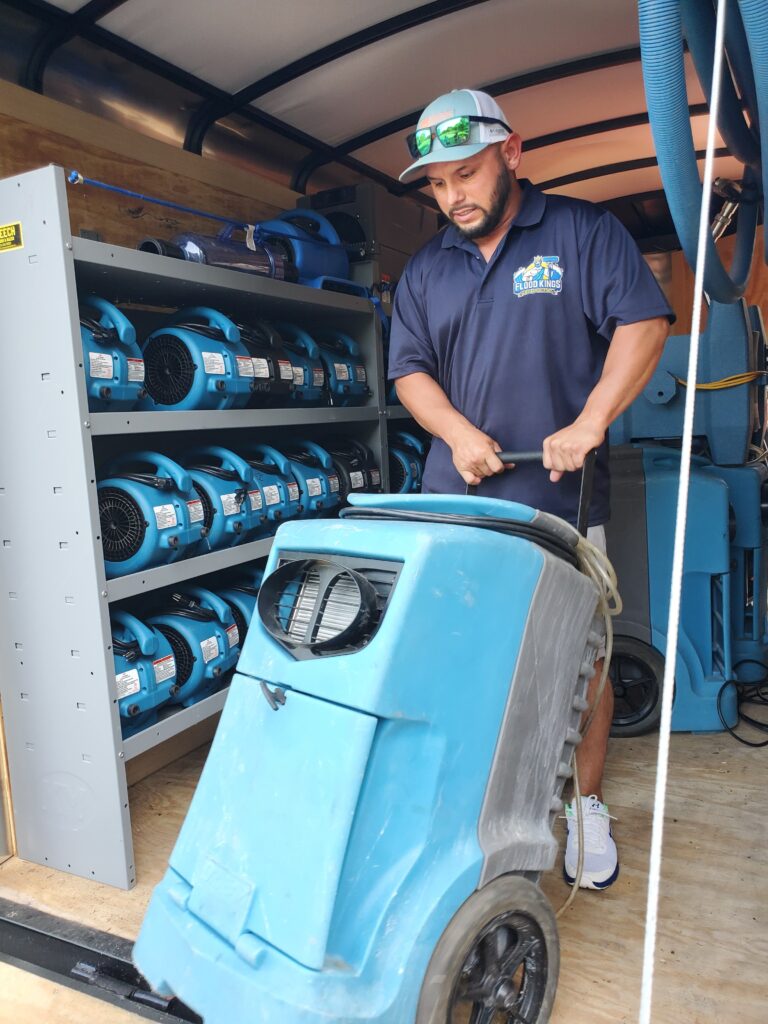
Water damage restoration consists of assessing the damage, water extraction, removing moisture, and finally, restoring the affected area. While the cost of water extraction is more straightforward to calculate, the restoration cost relies more on what kind of material is affected.
For example, drywall restoration costs between $1.50 and $3 per square foot. Mold restoration typically costs between $4.75 and $5.50. Plaster and hardwood restoration work costs between $6.25 and $15 per square foot.
Water Damage Restoration Labor Costs
Simple tasks such as dry cleaning and extraction generally involve lower labor costs and require less time to complete. At the same time, more extensive processes, like replacing structural materials, will be more expensive.
However, the cheapest option isn’t always the best. This is why it’s essential to hire experts like TN Flood Kings: we have years of experience in mitigating similar damage in homes across the greater Nashville area, and you can rely upon our results.
Homeowners who are dealing with water damage should consider hiring multiple contractors in order to compare material and labor costs. We know it can be expensive, so it’s essential to shop around for the best price and service.
We’ll provide you with a free cost estimate so you can make an informed choice.
Water Damage Restoration Cost Breakdown
Requesting an estimate from a professional water damage restoration service company is the best way to determine the cost of water damage restoration, but here are some rough examples according to the type of repair.
Roof Repair
The actual cost will mainly be determined by the roof material and structural damage. The average cost of repairing a water-damaged roof is between $650 and $1000. You should have a professional roofer near you who can come and assess the damage and repairs.
Superficial water damage caused by a faulty fixture will be less expensive than a damaged sewage line that also pollutes your home. A leaking roof is commonly caused by cold weather, low slopes, flat roofs, cracked flashing, and missing shingles.
Ceiling Repair
Ceiling repairs, which cost between $325 and $1,100, are the most common water damage repair connected to a leaking roof. It largely depends on the extent of the damage.
Water seeps down through insulation from roof cracks or leaking or broken pipes above, causing damage to the ceiling. This takes time to notice and is frequently detected by staining and soft spots in the ceiling before seeing water drip from the ceiling.
Replacing the ceiling drywall and renovating the area are common repairs. Because the ceiling is more challenging to work on, water damage restoration costs are higher than for drywall replacement on the walls.
Basement Repair and Restoration
Whatever the reason for your basement’s water damage, you need to call a contractor as soon as possible to reduce the risk of structural damage. The extent and type of water damage determines the cost of cleaning up a basement flood.
A basement with an inch of clean water may cost $500 to $1,500 to repair, whereas a sewage backup may cost $2,800 or more.
When waste and organisms contaminate water, such as from a sewage backup or a river flood, you must budget for additional water damage repair costs. Floodwater contamination can cause serious health risks and should be handled by professionals only.
Drywall Repair
Water damage drywall repair typically costs between $300 and $850, with $550 being the average. A low-cost drywall repair is $250, while extensive flood damage repairs can cost up to $750 or more.
When drywall becomes wet, it must be replaced to avoid mold growth and the possibility of it falling apart. If your drywall becomes soaked, you must replace it immediately to avoid soft, deteriorating walls or mold problems.
Bathroom Fixture Repair
Water damage can be costly if your bathtub cracks, your toilet breaks, or you have a leaky roof. Bathroom fixtures and piping are commonly the sources of water damage since there is so much water coming into or out of a bathroom.
If you catch a leaky pipe early, it will cost between $150 and $350 to repair. Toilet repairs typically cost between $140 and $300. A tank replacement costs $45 to $300 in labor, a new flange or drain costs $145 to $165, and a clogged restroom drain costs $85 to $600.
Shower and bathtub fixtures cost between $200 and $800, while minor plumbing and surface repairs cost between $100 and $300. A drain clog can cost up to $200 to clear.
Cleanup and repair services for a 120-square-foot restroom can add up to a total cost of $3,000.
Leaky Plumbing and Burst Pipe Repair
A burst pipe and its associated damage typically cost between $1,000 and $4,000. The two most common causes of burst pipes are clogged and leaking. If it’s on the second floor of a house and the water runs down into the ceilings, walls, and flooring, the costs can quickly escalate.
One of the simplest home improvement projects is preventing burst pipes. Regular maintenance and plumbing inspections can reduce the likelihood of a pipe bursting. The cost of new plumbing can range from $350 to $2,000, based on the scale of the project and the parts that need to be replaced.
Mold Restoration and Removal
Mold is a common byproduct of water damage. Mold removal typically costs $2,200. Bacterial growth can start in 24 to 48 hours, based on the outer surface, substance, and moisture or water levels.
If you detect a musty odor, it could indicate mold damage. Mold is most commonly found in the kitchen, restroom, basement, attic, or the air-conditioning vent. If you detect mold, call TN Flood Kings: we’re experienced mold remediation professionals and will tackle even the most severe mold infestations with ease.
Sump Pump Installation
A sump pump can be helpful if you live in a region with high groundwater or frequent flooding. Sump pump repairs range in price from $50 to $400, but the average price with configuration is $1,200.
The unit removes water that has accumulated around your base and diverts it away from your home. The final cost will be determined by the type of pump required, the type of floor in your basement, and whether or not you already have a drainage system in place.
Floor and Hardwood Repair
The severity of the damage also determines the cost of repairing water-damaged hardwood floors. Hardwood can often survive being submerged for a short period, but there may be damage if the entire room is covered. Other floor types are more permeable to water and, therefore, more expensive to repair.
Water damage repair costs between $200 and $550, depending on the type of flooring and how long the water has been sitting. Tile floors are water-resistant and can be cleaned and dried with minimal damage.
Carpets absorb water quickly, causing your subfloor to deteriorate, potentially leading to mold. Similarly, water can penetrate and damage laminate, linoleum, and vinyl floors, so it’s essential that you get in touch with TN Flood Kings as soon as possible to prevent further issues.
When faced with damaged flooring caused by water, homeowners often find themselves at a crossroads — should they opt for repairs or completely replace the affected flooring? This decision requires careful consideration of several factors.
If the damage is minimal and confined to a small area, repairing that specific section may be an appropriate choice. Not only can this save time and money compared to completely replacing the entire flooring, but it also allows for targeted restoration efforts.
However, if the damage is substantial and affects a significant portion of the floor, opting for complete replacement is more practical in terms of long-term durability and aesthetics. Also, consider factors such as material type when making your decision.
Preventing Further Water Damage
High-quality water damage restoration service includes preventing further damage and educating the client on how to protect their property in the future.
For basements and lower floors in flood-prone areas, we recommend installing and maintaining water pumps and other moisture removal equipment.
To prevent mold and mildew from growing, you need to remove excess moisture from an affected area immediately and contact a qualified mold remediation crew. If left to grow, they can cause additional damage to your home and become a health concern. If mold or mildew is present, addressing it is an additional item on your water remediation checklist.
The dirtier the water, the more preventative measures and treatments will be required, resulting in higher repair costs. Black water is the worst-case scenario: because of the need to treat for contaminants, black water and gray water mitigation are typically more expensive.
Also, the longer you wait to address water damage, the greater the impact, resulting in more repairs and a hefty bill. Neglecting water damage can result in additional issues such as mold, rot, and even significant damage that may be irreversible.
Water Damage Restoration Cost: Bottom Line
Nobody wants to be surprised with a higher-than-expected bill. TN Flood Kings provides a competitive rate and excellent service in the greater Nashville area. We price our services so our neighbors can afford to get their homes back in great shape without breaking the bank.
We are certified by the Institute of Inspection Cleaning and Restoration Certification (IICRC) and have over 15 years of experience in managing all sorts of water problems.
Curious about water damage restoration costs? Call TN Flood Kings! We’re available 24/7, ready to give you an estimate and the peace of mind you deserve.


